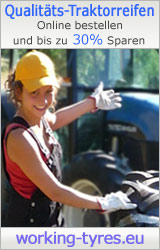|
Sie sind hier: Landwirtschaft > Transgene Pflanzen > GMO - Option für Landwir. > Freisetzung Schweiz  Dieser Artikel ist leider nicht in deutscher Sprache verfügbar. Dieser Artikel ist leider nicht in deutscher Sprache verfügbar. 
Field release of transgenic crop in Switzerland, an ecological
risk assessment
Download here:
Field release of transgenic crop in Switzerland, an ecological
risk assessment
( pdf 429 Kb)
K. Ammann, Y. Jacot and P. Rufener Al Mazyad pdf 429 Kb)
K. Ammann, Y. Jacot and P. Rufener Al Mazyad
Summary
Technology Assessment in the anglosaxon world is used in a broad sense of the
word. It includes the total of ecology, embracing also socio-economic sectors.
This is why we want to restrict this study to vertical gene flow, here treated
in most aspects, but leaving out socio-economic considerations. As always in
ecology, there are a lot of connections to other factors to be considered, including
some basics on crop characteristics regarding domestication and hybridization.
This is why two chapters on these topics have been added.
The basic philosophy of this study is to make an attempt to de-focus discussion
on genetic engineering. We consider it highly important to discuss potential
risks on genetic engineering always in the context of classical breeding
methods. This might also lead to a healthy reconsideration of some beliefs in
classical breeding. But it will also have the effect of broadening the mind
during the process of the assessment of potential risks in genetic engineering.
Some of these risks have been there for decades and even centuries in classical
breeding. In some cases these potential risks turned out to be less harmful
to ecosystems than others. We should not forget that in the view of ecology
one of the biggest risks with clearcut negative effects is the strong trend
to monocultures, especially the one starting in the last three decades. Again,
if we de-focus discussion, we have to realize that genetic engineering has the
same potential risk of enhancing monocultures, but at the same time also a good
potential to turn around this unhealthy trend.
By comparing potential and actual risks in both fields we need a clear view
of the similarities and differences. Raamsdonk 1993 has given a scheme of gene
flow, whether natural or influenced by human activity. It clearly shows that
most pathways of gene flow are both natural and also strongly influenced by
agriculture and breeding. But there is one notable exeption: Transformation
is something quite new. It is now possible to jump over the limits of species,
genera and even families and orders in a much easier way. Let's not forget that
there is something universal about the sequences used for transformation and
often lay persons are puzzled by expressions like "a fish gene" for
instance. They have not the knowledge how to judge the novelty of such transformation.
But this statement also counts for the experts: Position effects and pleiotropic
effects after transformation have to be considered in all cases, this is why
we need to think about new risk assessment methods for genetic engineering.
But we should always be aware of the fact that classical breeding is also dealing
with the introduction of genes to a crop plant. The big difference is that these
genes introduced in classical breeding are always belonging to some relatively
close parents, transformation is always done in the relatively narrow environment
of interbreeding species groups. But again we have to consider all cases in
classical breeding, where single gene mutations or the change of only a small
number of genes has dramatically changed morphology, growth and yield of a crop.
Considering the possible escape of transgenes to wild relatives there are parallels
between classical breeding and genetic engineering regarding the processes of
vertical gene flow, but the results are different: In the case of a possible
escape of a novel transgene: We have to consider a new situation for the wild
relatives receiving the transgene.
|




 Produkten.
Produkten.